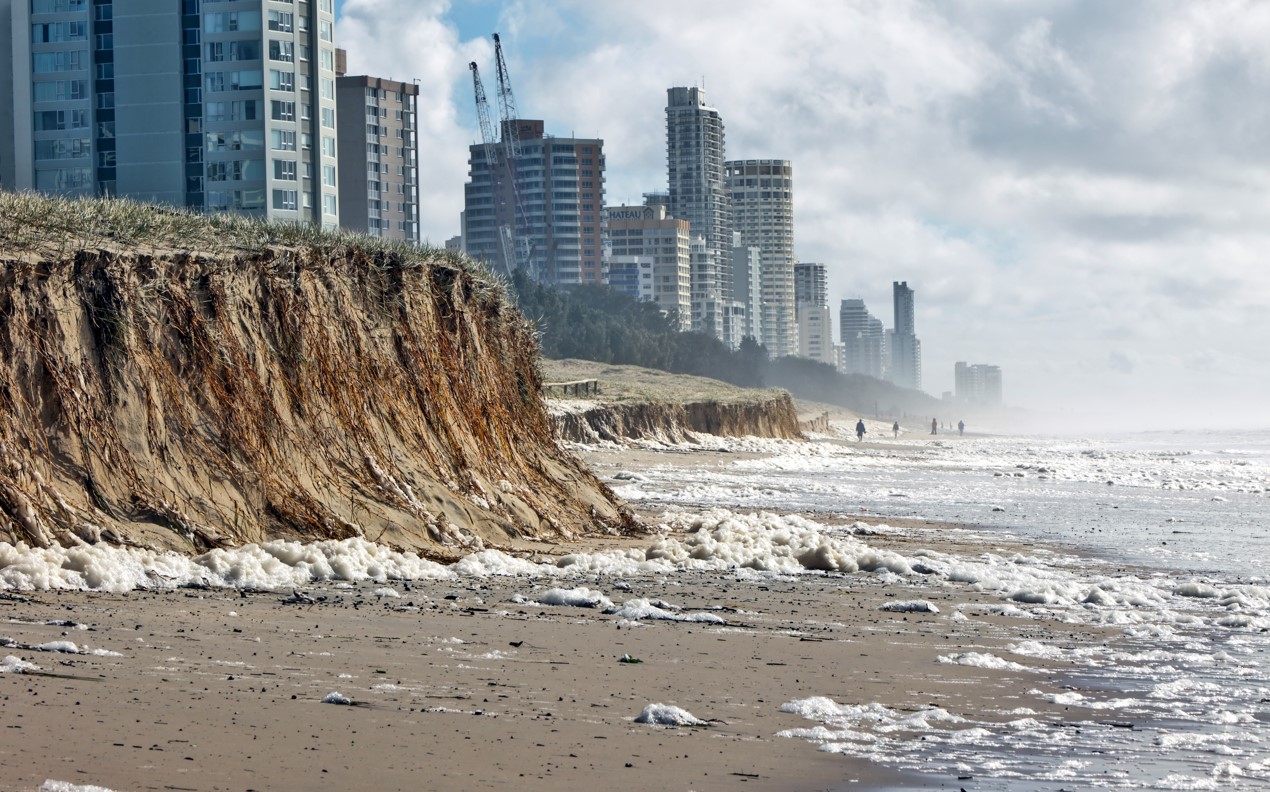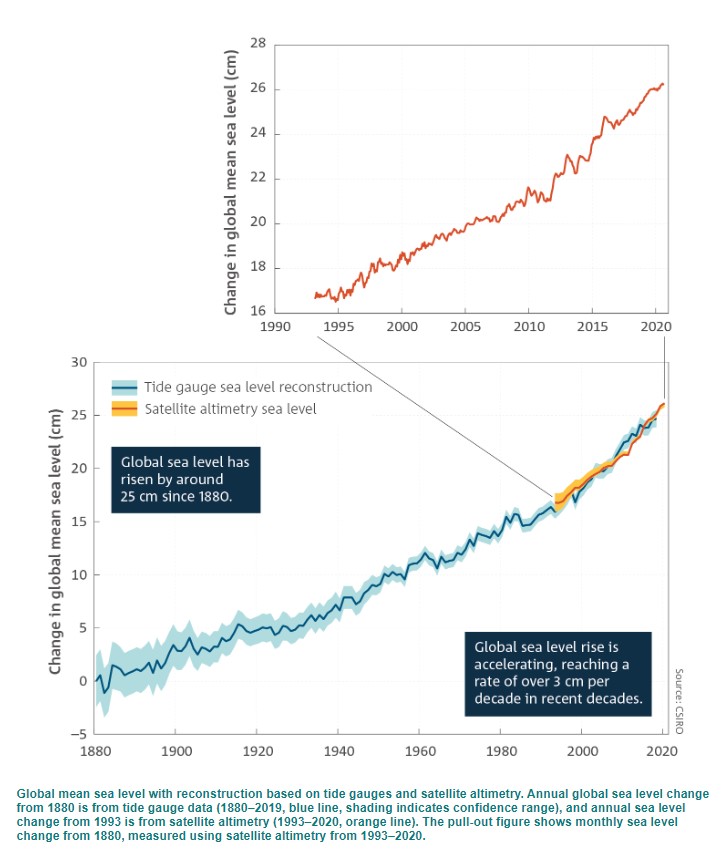How much has sea level risen due to climate change?
We hear a lot about the current and future impacts of climate change, and that sea level rise is a big part of that. But how fast are seas actually rising?
The answer is that sea level rise is accelerating ever more rapidly, with an overall rise of a fifth of a metre, or 20 cm, since 1901, according to the latest report from the Intergovernmental Panel on Climate Change (IPCC).
What are the report's key takeaways with regard to sea level rise?
This latest IPCC report, which has the somewhat colourless title of "AR6", is basically six recent reports melded into one.
It states that "It is unequivocal that human influence has warmed the atmosphere, ocean and land" and goes on to state that:
- Global mean sea level increased by 0.2 metres between 1901 and 2018.
You might not think 20 centimetres is too drastic, but as mentioned, the rate of rise is increasing. For example, the average rate of sea level rise was:
- 1.3 mm per year between 1901 and 1971
- 1.9 mm per year between 1971 and 2006
- 3.7 mm per year between 2006 and 2018
So as you can see, sea level rise between 2006 and 2018 was almost double the rate of the 35-year period before that. It was also more than triple the rate of the earlier period between 1901 and 1971.

Image: Scenes like this will likely become more common during extreme weather events in Australia. Source: iStock.
The IPCC report states that "Human influence was likely the main driver of sea level increases since at least 1971."
It also says that "Observed changes in extremes such heatwaves, heavy precipitation, droughts, and tropical cyclones, and, in particular, their attribution to human influence, has further strengthened since AR5", the previous assessment report which was completed in 2014.
Can we observe sea level rise in Australia?
If you go to the beach today, it’ll probably look a lot like it did at any period in your lifetime, give or take the effects of natural forces like weather and tides and erosion.
In fact, it's still almost impossible for the average Aussie to detect that 20 cm of sea level rise since 1901 along Australia's coast, especially when you factor in day-to-day tidal activity and variations in weather.
But that will likely change in the future.
If (as seems certain) the sea level keeps rising in our lifetimes, we'll eventually notice our favourite beach shrinking, or higher average water levels in the estuaries where we fish or go boating, as well as more frequent severe coastal inundation during king tides, storms, and tropical cyclones.
So while the full picture is not yet apparent at a glance, the data shows it clearly. Check out the twin graphs below from the Australian Bureau of Meteorology's State of the Climate Report 2022.

Image: The graphs show the rising trend from the perspective of satellite data (the smaller graph) and tide gauge data (the larger one below it). Source: BoM.
If you're wondering why the line jumps up and down, that's because sea level rise is not uniform each year due to prevailing weather patterns. For example, the rate of sea level rise in the Australian region tends to slow slightly in La Niña years due to heavy rains displacing water from the ocean to the land.
But the overall trend is overwhelmingly upwards with the curve becoming steeper each decade.